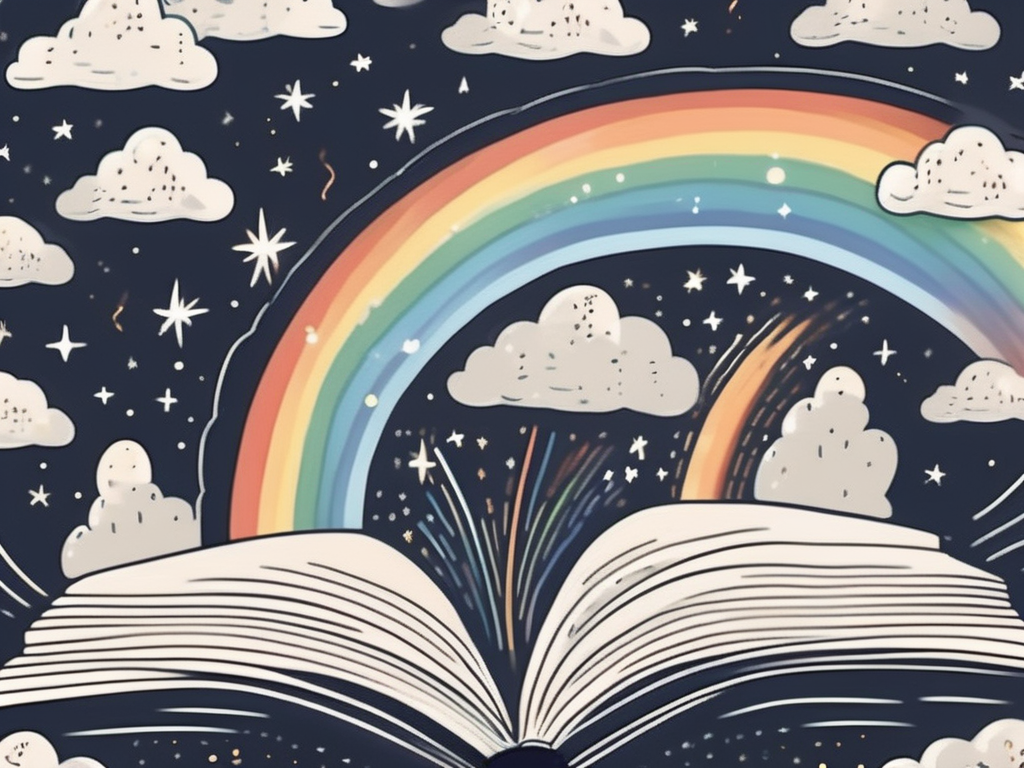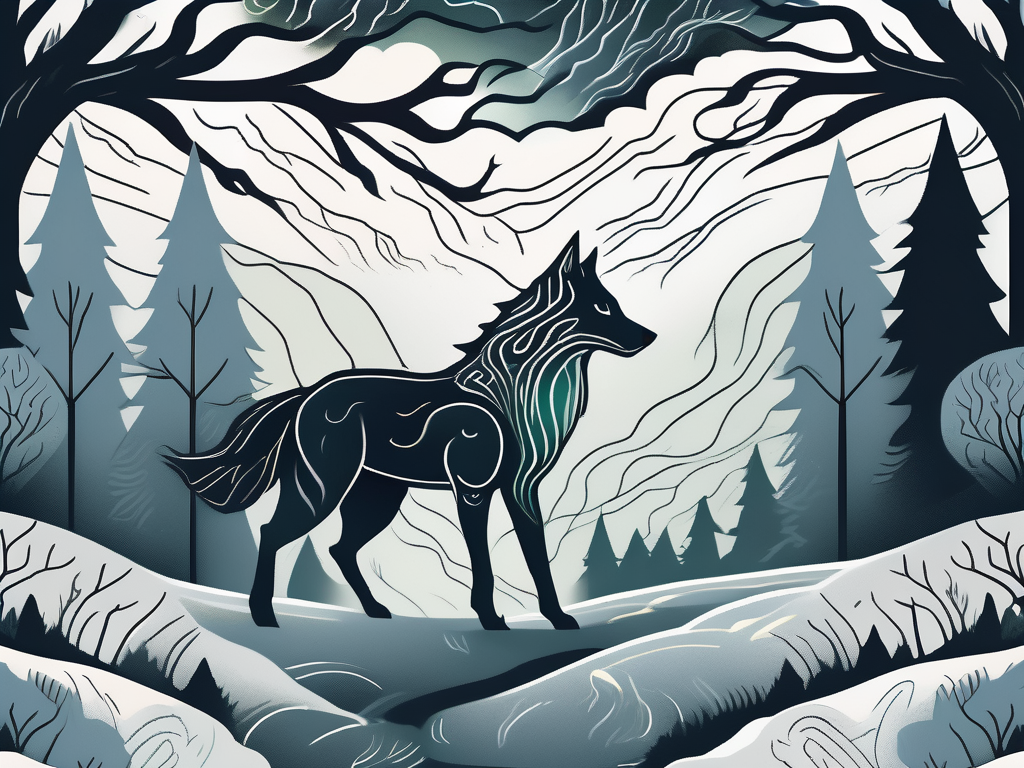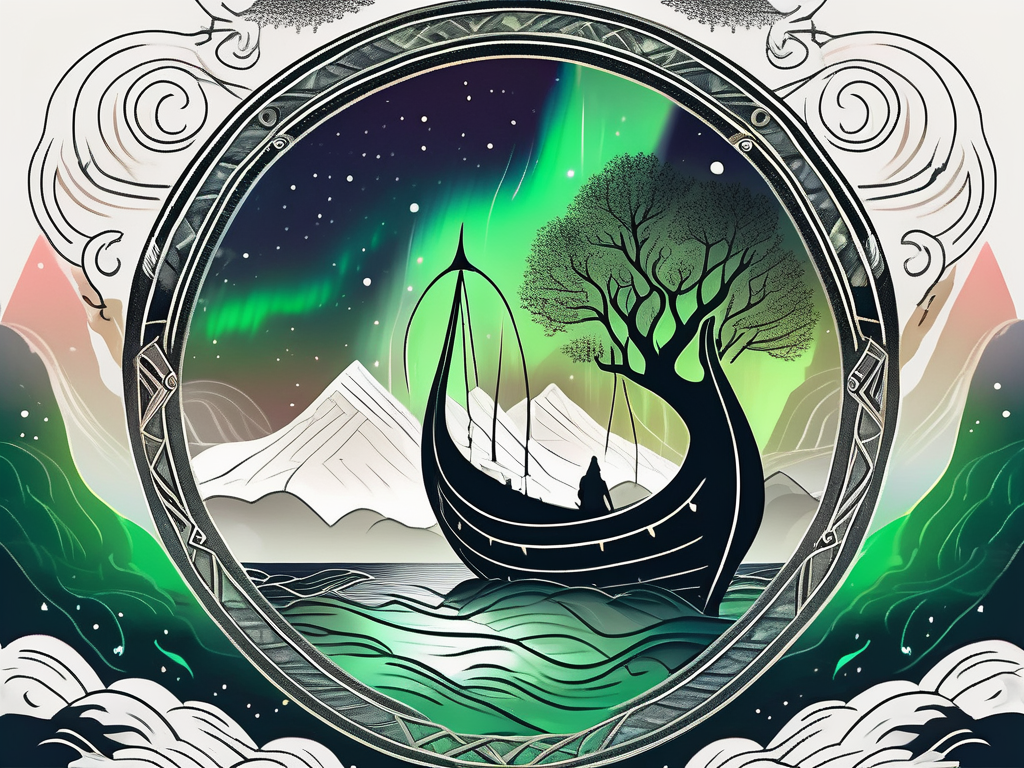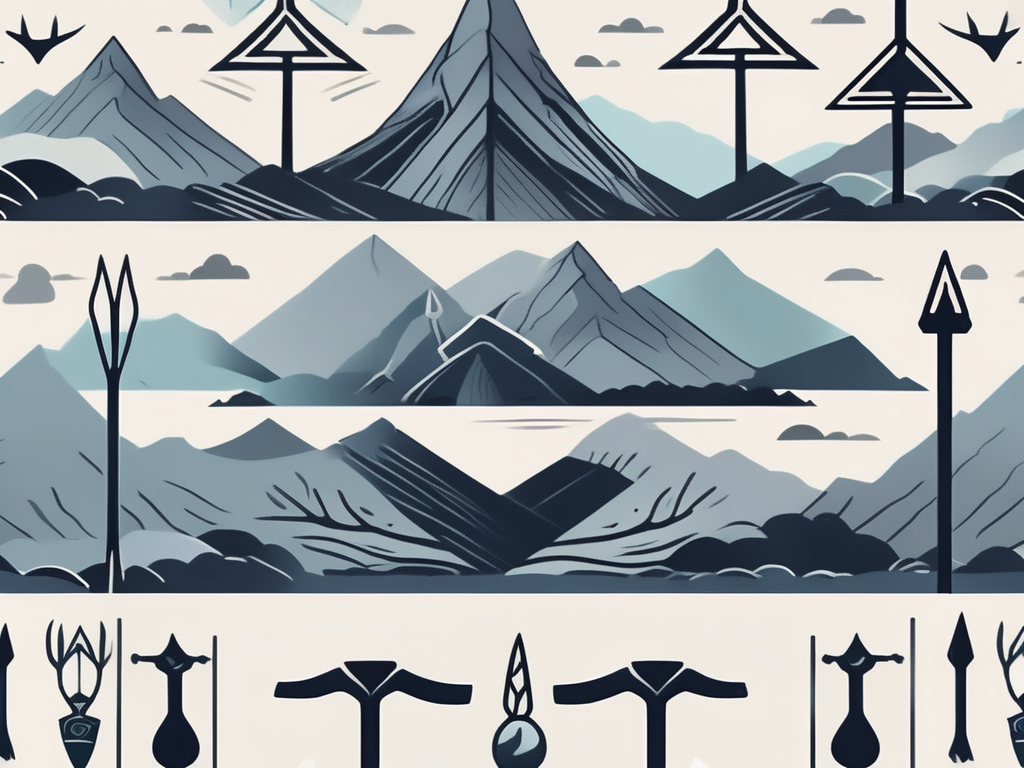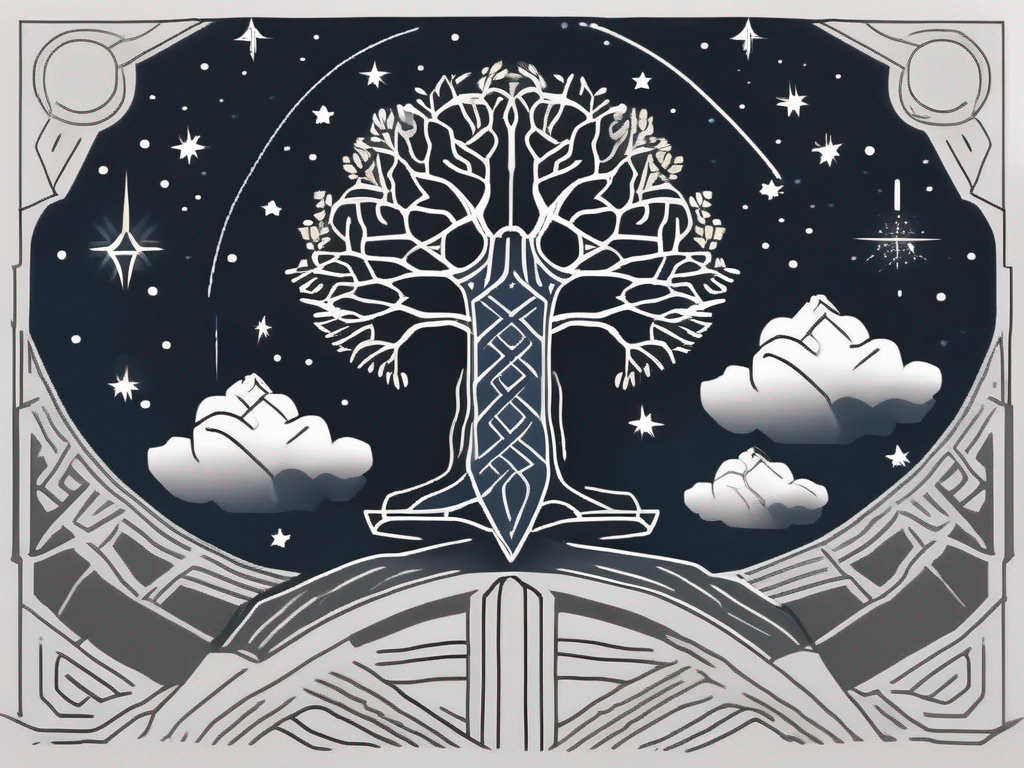Norse mythology is a fascinating subject that gives us a glimpse into the ancient world of the Vikings. From their powerful gods and goddesses to their intriguing mythical creatures, the legends of Norse mythology continue to captivate our imagination. In this article, we will delve into the origins of Norse mythology, explore the different realms of Norse cosmology, and unravel the roles played by mythical creatures in these ancient legends.
Understanding the Origins of Norse Mythology
The Norse worldview was shaped by their unique understanding of the world and the forces that govern it. At the heart of Norse mythology lies the belief in a vast and complex universe, inhabited by gods, humans, and various other creatures. To understand this mythology, it is crucial to explore the creation story of the Norse world and the influence of paganism within their society.
The Creation of the Norse World
In Norse mythology, the creation of the world was the result of a cataclysmic clash between fire and ice. From this primordial chaos, emerged the nine realms that constituted the Norse cosmology. Each realm had its unique characteristics and inhabitants, all interconnected through the mythical World Tree, Yggdrasil.
The first realm to emerge from the chaos was Muspelheim, a realm of fire and heat, ruled by the fire giant Surtr. Muspelheim stood in stark contrast to the icy realm of Niflheim, where the primordial being Ymir, the ancestor of all giants, was born. As the fire and ice collided, the giant Ymir was formed and the creation of the Norse world began.
From the body of Ymir, the gods created the earth, known as Midgard, which became the realm of humans. The gods then used Ymir’s flesh to create the oceans and lakes, his blood to form the rivers, and his bones to shape the mountains. They placed Midgard at the center of the Norse cosmos, encircling it with the vast ocean.
Above Midgard, the gods created Asgard, their celestial realm. Asgard was home to the Aesir, the principal gods of Norse mythology, including Odin, Thor, and Loki. It was a place of divine power and beauty, with grand halls and majestic palaces. Asgard was connected to Midgard by the Bifrost, a rainbow bridge guarded by the god Heimdall.
Below Midgard, the gods created the realm of Niflheim, a land of eternal ice and mist. Niflheim was home to the primordial well of Hvergelmir, from which flowed the rivers that nourished the world tree Yggdrasil. It was also the birthplace of the fearsome serpent Jormungandr, which encircled Midgard, and the monstrous wolf Fenrir.
The other realms of the Norse cosmos included Vanaheim, the realm of the Vanir gods associated with fertility and nature, and Alfheim, the realm of the light elves. There were also the realms of Svartalfheim, the land of the dark elves and dwarves, and Jotunheim, the realm of the giants.
The Influence of Paganism
Paganism played a significant role in Norse mythology, shaping the beliefs and rituals of the Viking people. The deities worshipped by the Vikings were intrinsically tied to the natural world, with gods like Odin embodying wisdom and war, while goddesses like Freya represented love and fertility. The Vikings believed that through their worship and sacrifices, they could gain favor with the gods and ensure their protection in both battle and daily life.
The Vikings held great reverence for the natural elements, seeing them as manifestations of the divine. They believed that the gods controlled the weather, the seasons, and the fertility of the land. As a result, they performed rituals and ceremonies to honor the gods and seek their blessings. These rituals often involved offerings of food, drink, and valuable items, which were believed to please the gods and ensure their favor.
One of the most important aspects of Norse paganism was the concept of fate, known as “Wyrd.” The Vikings believed that fate was predetermined and that the gods themselves were subject to its power. They saw their lives as intertwined with the gods and believed that their actions could influence their destiny. This belief in fate gave the Vikings a sense of purpose and a willingness to face adversity with courage and resilience.
In addition to their religious practices, the Vikings also had a rich tradition of storytelling and poetry, which played a vital role in preserving and passing down their mythology. Skalds, the Viking poets, were highly respected and were responsible for recounting the tales of the gods and heroes to the Viking communities. Through these stories, the Vikings found inspiration, guidance, and a sense of connection to their ancestral roots.
In conclusion, Norse mythology is a complex and fascinating belief system that offers insights into the worldview and values of the Viking people. The creation story of the Norse world and the influence of paganism provide a foundation for understanding the gods, heroes, and mythical creatures that populate this rich mythological tradition.
The Pantheon of Norse Gods and Goddesses
At the heart of Norse mythology is a rich pantheon of gods and goddesses, each with their unique personalities and mythological roles. Let’s take a closer look at three of the most prominent figures in Norse mythology: Odin, Thor, and Loki.
Odin: The Allfather
Odin, known as the Allfather, was the chief god of the Norse pantheon. He was believed to be the wisest of all the gods, possessing immense knowledge and power. Odin played a vital role in the creation of the world and was associated with war, poetry, and magic. He was often depicted as a one-eyed figure, sacrificing one of his eyes in his quest for wisdom.
As the ruler of Asgard, the realm of the gods, Odin was responsible for maintaining order and balance in the cosmos. He was known to travel the world in disguise, seeking wisdom and knowledge from all corners of the universe. It is said that he hung himself from the world tree, Yggdrasil, for nine days and nine nights, in order to gain the knowledge of the runes.
Odin was also the god of war, leading the gods into battle against the giants and other enemies of Asgard. He rode into battle on his eight-legged horse, Sleipnir, wielding his powerful spear, Gungnir. Odin was a complex deity, embodying both the wisdom of a sage and the ferocity of a warrior.
Thor: The Thunder God
Thor, the mighty god of thunder, was one of the most beloved gods in Norse mythology. Known for his great strength and fierce protection of the gods and humans alike, Thor wielded the mythical hammer Mjolnir. He was a symbol of bravery and courage, often called upon by the gods to defend them from the giants that sought to bring chaos to the world.
Thor was the son of Odin and the earth goddess, Fjörgyn. He was known for his red hair and his thunderous voice, which echoed like thunder across the sky. It is said that when Thor swung his hammer, lightning would flash across the heavens, striking fear into the hearts of his enemies.
Despite his immense power, Thor was also known for his compassion and sense of justice. He would often travel to Midgard, the realm of humans, to protect them from the forces of evil. Thor’s adventures were legendary, and he was revered as a guardian and protector by both gods and humans alike.
Loki: The Trickster
Loki, the mischievous and unpredictable god, straddled the line between friend and foe in Norse mythology. With his quick wit and shape-shifting abilities, Loki was known for causing trouble and bringing chaos into the realm of gods and humans. Though often seen as a trickster, Loki also had moments of heroism and played a role in many significant events within Norse mythology.
As a shape-shifter, Loki could take on various forms, from a fly to a giant to a beautiful woman. This ability allowed him to deceive and manipulate others, often for his own amusement. Loki’s mischievous nature often got him into trouble, but his cunning and intelligence also proved useful in times of need.
Despite his chaotic nature, Loki was not without redeeming qualities. He was the father of many important figures in Norse mythology, including the monstrous wolf Fenrir and the serpent Jormungandr. Loki’s actions, though often driven by selfish motives, played a crucial role in the events leading up to Ragnarok, the final battle of the gods.
In conclusion, the pantheon of Norse gods and goddesses is a fascinating and complex system of deities, each with their own unique attributes and roles. Odin, Thor, and Loki are just a few examples of the rich mythology that has captivated people for centuries. Their stories continue to inspire and entertain, reminding us of the power of myth and the enduring legacy of Norse culture.
The Nine Realms of Norse Cosmology
Beyond the gods and goddesses, Norse mythology describes a vast and intricate cosmology composed of nine realms. These realms were interconnected and inhabited by a variety of beings, both divine and mythical.
Asgard: The Home of the Gods
Asgard, the realm of the gods, was a magnificent place located at the top of Yggdrasil. It was here that the gods resided in their grand halls, engaging in feats of valor and decision-making that would shape the fate of the universe.
Midgard: The Realm of Humans
Midgard, also known as Earth, was the realm inhabited by humans. It was a place of struggle, where humans worked the land, fought battles, and carved out their destinies. Midgard occupied a central position in Norse mythology, as it was the bridge between the divine realms and the mortal world.
Hel: The Land of the Dead
Hel was the realm of the dead, the final resting place for those who did not ascend to the grandeur of Valhalla. It was ruled by Hel, the goddess of death, and was considered a gloomy and desolate place.
The Role of Mythical Creatures in Norse Legends
Mythical creatures played a significant role in Norse mythology, often representing primal forces or embodying specific attributes. Here are three of the most notable mythical creatures in Norse legends: giants, dwarves, and dragons.
Giants: The Ancient Enemies
Giants were portrayed as immense, powerful beings that represented chaos and destruction. They frequently clashed with the gods and were viewed as the ancient enemies of the divine order.
Dwarves: The Master Craftsmen
Dwarves were known for their exceptional craftsmanship and were often sought after by gods and humans alike for their skills. These skilled artisans were responsible for creating precious weapons and treasures that played a significant role in the myths and legends of the Norse world.
Dragons: The Symbols of Chaos
Dragons were mythical creatures often associated with danger and chaos. They embodied primal forces and posed a threat to the gods and humans. In Norse mythology, dragons were depicted as serpentine creatures with fearsome powers.
In conclusion, Norse mythology is a treasure trove of captivating legends and ancient wisdom. From the origins of the Norse world to the intricate pantheon of gods and goddesses, and the role played by mythical creatures, these stories continue to inspire and entertain us. Exploring Norse mythology allows us a glimpse into the rich tapestry of Viking culture and their intricate understanding of the world. So, embrace the adventure and unravel the legends of the Vikings!

